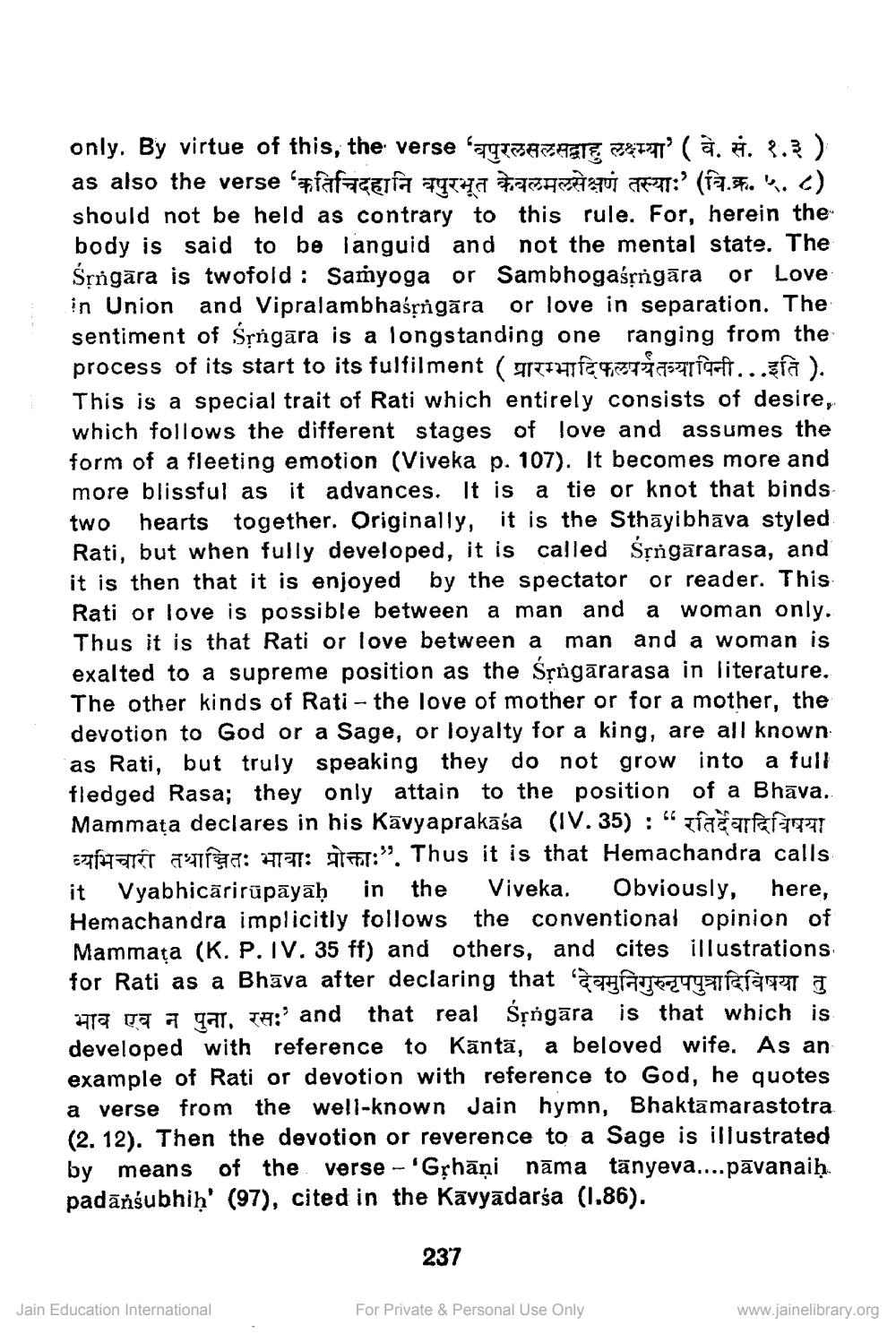________________
only. By virtue of this, the verse aq AZER, ZEIT' ( a. xi. 3.3) as also the verse fafcia na #974 RE:' (fa.F..'. c) should not be held as contrary to this rule. For, herein the body is said to be languid and not the mental state. The Śrgāra is twofold : Samyoga or Sambhogaśộngāra or Love in Union and Vipralambhaśộngāra or love in separation. The sentiment of Sțngāra is a longstanding one ranging from the process of its start to its fulfilment ( TTIHTETTZT3757aeft... tā). This is a special trait of Rati which entirely consists of desire, which follows the different stages of love and assumes the form of a fleeting emotion (Viveka p. 107). It becomes more and more blissful as it advances. It is a tie or knot that binds two hearts together. Originally, it is the Sthāyibhāva styled Rati, but when fully developed, it is called śộngārarasa, and it is then that it is enjoyed by the spectator or reader. This Rati or love is possible between a man and a woman only. Thus it is that Rati or love between a man and a woman is exalted to a supreme position as the Sșngārarasa in literature. The other kinds of Rati - the love of mother or for a mother, the devotion to God or a Sage, or loyalty for a king, are all known as Rati, but truly speaking they do not grow into a full fledged Rasa; they only attain to the position of a Bhāva. Mammata declares in his Kāvyaprakasa (IV.35) : " fadarfer IT EZRASTET 29a: 27T: Fr:". Thus it is that Hemachandra calls it Vyabhicărirüpāyāḥ in the Viveka. Obviously, here, Hemachandra implicitly follows the conventional opinion of Mammața (K. P. IV. 35 ff) and others, and cites illustrations for Rati as a Bhava after declaring that 'देवमुनिगुरुनृपपुत्रादिविषया तु भाव एव न पुना, रसः' and that real Srigara is that which is developed with reference to Kāntā, a beloved wife. As an example of Rati or devotion with reference to God, he quotes a verse from the well-known Jain hymn, Bhaktamarastotra (2. 12). Then the devotion or reverence to a Sage is illustrated by means of the verse -'Gșhāņi nāma tänyeva....pāvanaih padāńśubhiḥ' (97), cited in the Kavyadarśa (1.86).
237
Jain Education International
For Private & Personal Use Only
www.jainelibrary.org




